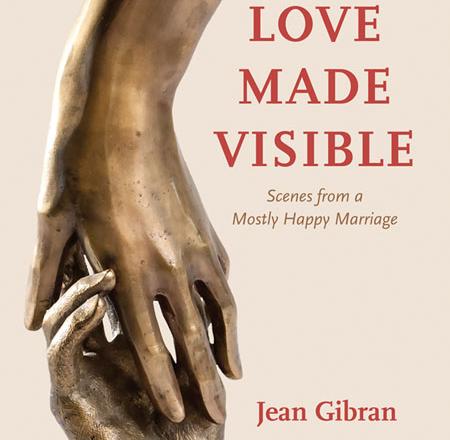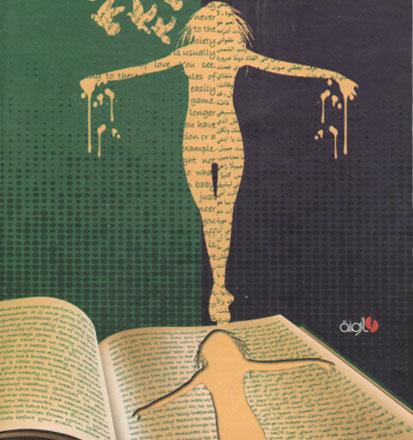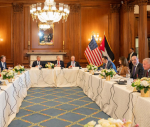You are here
Overwhelmed by his extravagant energy
By Sally Bland - Nov 02,2014 - Last updated at Nov 02,2014

Love Made Visible: Scenes from a Mostly Happy Marriage
Jean Gibran
US: Interlink Books, 2014
Pp. 215
Despite the subtitle, this is more than a memoir of a marriage, for both Jean and Kahlil Gibran are/were such remarkable people, so deeply engaged in the arts and their community. Coming from a conservative New England family, Jean faced much opposition to her marrying a “foreigner” (who was US-born), but she took it all in stride.
Obviously quite versatile, she embraced a completely different life style and entered Kahlil’s artist circles, yet continued her work as a schoolteacher. Kahlil Gibran — not to be confused with his cousin, the poet Gibran Kahlil Gibran — grew up near what is now Boston’s Chinatown, the son of Lebanese immigrants. Undeterred by the prevailing racism against Arab immigrants, he gracefully straddled multiple cultural milieus, long before “multiculturalism” became fashionable.
Partially self-taught, a leading light in Boston Expressionism, Kahlil was a modern-day Renaissance man, whose work ranged from sculpture to crafts and inventions. As Jean recalls, “Sculpting, drawing, crafting musical instruments, restoring an ancient object — it didn’t matter, making beauty made him strong and happy.” (p. 18)
His favourite line from his cousin’s famous book, “The Prophet,” was “Work is love made visible,” inspiring this book’s title.
Theirs was more than a marriage; it was an ongoing collaboration: “Living a studio-centred — often meagre — existence, we took daily walks, shared workspaces, and constantly engaged in dialogue about our mutual projects.” (p. 65) Besides arranging numerous art exhibits and events, and restoring and selling antiques and artefacts, one of their major joint projects was writing a biography of the poet, “Kahlil Gibran: His Life and World”. (Interlink Books, 1974, 1991)
As art historian Charles Giuliano remarks in the foreword, “Love Made Visible” is not the book he anticipated. Rather than beginning at the beginning, Jean begins at the end of Kahlil’s life. One is almost immediately whisked into the emergency room, sharing Jean’s disbelief, her agonising over decisions she had to make, her difficulty in accepting Kahlil’s death, and how her daughter helped her work through her shock. While this can be somewhat disconcerting, it has the effect of drawing one very intimately into the emotional fabric of the Gibran’s relationship. By the time one reaches midway in the book and begins to learn about their families, childhood, education, how they met, married, etc., one feels one already knows these people — and the author’s writing becomes steadily more lyrical.
Meeting Kahlil heaved Jean out of her middle-America background into a more culturally and ethnically diverse world. As she remembers her first visit to his studio: “The moment that I entered and inhaled waves of unfamiliar scents I left my known world.” (p. 97)
But she didn’t stay long that day. After listening to his detailed descriptions of his work techniques, “Exhausted by so much information, overwhelmed by his extravagant energy, I need to escape… Leaving, I shook hands as though thanking an esteemed older personage, someone fascinating but completely removed from my monochromatic universe.” (p. 98)
Luckily, Kahlil pursued her, for one can’t help but think that many people’s lives were enriched by the fruitful partnership they established. “It took me a while to realise that I was on the threshold of a marvellous realm, a way of looking at things that was full of riotous colour and exquisite form. But when finally I did, I entered eagerly, despite the consequences.” (p. 99)
In recalling the half century that she spent with Kahlil, Jean creates a rich tapestry of the Boston art scene from the 1950s onwards — the people, the exhibitions, the friendships and collaboration among artists, photographers and critics. Most of all, there was the excitement of being involved in something new as American art developed beyond traditional strictures. There are also charming descriptions of the city of Boston, especially the South End, where the avant-garde artists congregated. Pictures of family, friends and Kahlil’s sculptures, as well as listings of his works and the exhibitions in which he participated complement the narrative.
Besides having an engaging writing style, Jean Gibran strikes a good balance between the personal and the public aspects of their life together. “Love Made Visible” is also an exploration of the creative process, of spirituality as related to art, of loss and healing, and of how opposites attract and enrich each other.
Related Articles
Kahlil Gibran: Beyond BordersJean Gibran & Kahlil G. GibranMassachusetts: Interlink Books, 2017Pp.
Inkshedding Gender Politics: Academic Activism in Feminist TheoryRula Quawas, editorAmman: Azminah, 2017Pp.
Salma Hayek is in Lebanon, her first visit to her ancestral homeland, to launch "The Prophet", an animated feature film she co-produced.
















